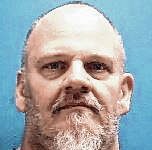Reach Healthy Communities and the city are partnering with new consultants for two road redesign projects — the residents who live in each neighborhood.
The agency and the city have completed two days’ worth of consultations about road projects for Taylor Road on the northeast side and Westenedge Drive on the north side with a nationally recognized healthy road design expert, Mark Fenton.
Fenton led community group meetings last week with residents who live near the two road projects, asking them for input on how road improvements should look and feel after the work is done.
Fenton’s work is part of a concerted effort by the city and local health agencies to improve health conditions for Columbus residents, said Laura Garrett, who is leading the initiative for Reach Healthy Communities.
[sc:text-divider text-divider-title=”Story continues below gallery” ]
Decades of road planning prioritizing cars over walking and biking have resulted in many Columbus residents having a less active, less healthy lifestyle, Garrett said. Reversing this trend means seriously reevaluating the way roads and trails are designed, she said.
Along with two degrees from the Massachusetts Institute of Technology in mechanical engineering, Fenton is author of many studies on the subject of healthy planning in city design. He also hosts a public broadcasting series, “America’s Walking,” part of which focused on healthier municipal planning.
His speaking fee was paid as part of a wider $125,000 grant to Reach Healthy Communities from the Center for Disease Control. These funds are dedicated to the concept of encouraging an active lifestyle through better city planning, including a study of zoning and road design techniques which could be used to improve walking conditions in Columbus, Garrett said.
Turning the tide
For the Westenedge project, the city is revising a road-improvement project that neighborhood residents strongly opposed in 2007.Signs emblazoned with the word “Why?” sprouted from many lawns along the mile stretch of pavement. Red ribbons marked a path through properties showing potential damage from extension of sidewalks in the neighborhood.
Lori Rowan, a Parkside Drive resident and regular commuter on the road, still has a T-shirt with the protestors’ signature “Why?” logo.
The first round of improvement plans, proposed by then-Mayor Fred Armstrong and city engineer Steve Ruble, were organized with no real input from the public, Rowan said.
While no formal site plans were ever released, Ruble did recommended installation of 5-foot sidewalks and on-street bike lanes on either side of Westenedge Drive. This plan did not win favor with residents who wanted to protect mature trees in the area and balked at the idea of increased traffic on the road, said Sue Linder, a Westenedge resident.
But this time, Fenton told Westenedge community residents who met at Parkside Elementary School on Tuesday that the project was a blank canvas, and they would be the designers.
He asked people to close their eyes and remember themselves as children — to hold in their minds an image of themselves when they were most active.
“How many of you recall an organized activity like sports?” he asked.
No hands were raised.
“How many of you remember wearing a uniform?” he asked.
No hands were raised.
“How many of you remember adult supervision?” he asked.
No hands were raised.
But when he asked if people considered themselves free-range children — able to run free around neighborhoods unsupervised — nearly every hand in the room shot toward the ceiling.
Statistical trends
The next slide in Fenton’s presentation displayed a graph showing an exact reversal in the number of children walking to school. In 1969, more than 50 percent of students walked to school, while 15 percent were driven to school, according to CDC statistics on school commuting.Nearly five decades later, more than 50 percent of students are driven to school, while fewer than 15 percent of kids walk, Fenton said.
The health consequence of these sedentary lifestyle changes have been disastrous, he said.
Type II diabetes, a condition which was virtually unknown in children a few decades ago, has become a major epidemic and juvenile obesity rates have skyrocketed, Fenton said.
Every home on Westenedge Drive is less than one mile from the nearest school building, Fenton said. If children living on the road aren’t able to minimally walk or bike to school, then something must be structurally wrong with the road, he said.
With large sports fields and parks on either end of the corridor, those kids should be outside every day, playing with their friends, Fenton said.
No one understands barriers to this type of activity better than the people who live and commute on that road, Fenton said.
So it makes sense to enlist local residents in designing the road, he said.
Building consensus
After presenting a few different design techniques and tools, Fenton turned planning over to local residents of the neighborhood — and the consensus was clear.Every single group focused on two design elements– installation of an 8- to 11-foot-wide seamless People Trail from Blackwell Park to Northside Middle School along the eastern side of Westenedge Drive and placement of miniature roundabouts at intersections with Rocky Ford Road and Locus and Laurel drives.
A similar session was held last Monday at Richards Elementary School for residents of the Taylor Road corridor, with similar results, said Dave Hayward, executive director of public works/city engineer.
However, participants at this meeting focused more heavily on a slightly different set of tools including installation of medians with trees narrowing drivers’ view of the road, slowing cars, he said.
Several Taylor Road proposals also involved installation of better crosswalks for children’s use in walking to school, Garrett said.
During each of the public design sessions, residents were asked to draw scale models of ideal renovations to their street on large pieces of paper. These were collected by city engineering staff, along with participants’ work-notes and will likely form the basis of any planned updates to the area, Hayward said.
There is still a lot of math and engineering yet to be done, but the basic concepts seem clear and feasible, Hayward said.
The planning sessions led by Fenton represent an entirely new beginning for potential upgrades to Westenedge Drive, which has been listed as a $1.2 million improvement project in city planning documents since the release of the 2010 City of Columbus Thoroughfare Plan, he said. Taylor Road improvements have been listed as a $2 million current improvement project since the 2010 revision to the roads plan.
These budgets were based on available federal dollars in 2008, Hayward said. No exact budget can be released for new projects until more specific site plans are available, however.
Hayward was the engineer contracted to design the original round of improvements to Westenedge Drive through Christopher B. Burke Engineering, his employer in 2007.
Initial site plans on each project should be available sometime in July, he said.
[sc:pullout-title pullout-title=”In the toolbox” ][sc:pullout-text-begin]
Nationally recognized road planning consultant Mark Fenton presented a number of techniques during design sessions with residents living near the Westenedge and Taylor Road corridors.
- Mini-roundabouts
- Multi-use trails and pathways
- Soft material buffers between pathways and roads
- Various bike lane designs
- Road dieting or narrowing
- Pop-up or temporary lane barriers
- Curb extensions
[sc:pullout-text-end][sc:pullout-title pullout-title=”Mark Fenton” ][sc:pullout-text-begin]
Mark Fenton is a nationally recognized expert on healthy road planning and design. He holds two engineering degrees from the Massachusetts Institute of Technology. The Massachusetts-based consultant has authored numerous site studies on road conditions in communities all over the United States.
Fenton also hosts a public television program, “America’s Walking,” which does not air in the Columbus area.
More information: Visit markfenton.com
[sc:pullout-text-end]




